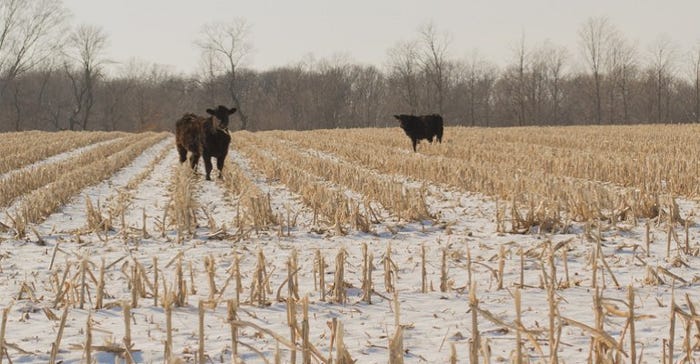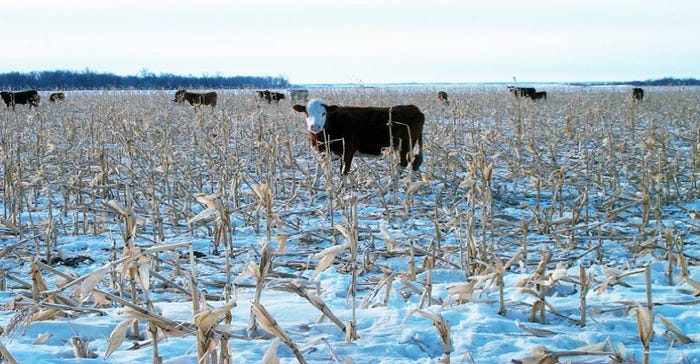Many producers have found great success utilizing portable fencing to graze corn fields, and significantly decrease fall and winter feed costs.Current climate and feed cost conditions have left many cattle producers re-evaluating their feeding strategies. Thankfully there is still time to make adjustments and use economically feasible solutions to weather through the months ahead. Many producers have found great success utilizing portable fencing to graze corn fields, and significantly decrease winter feed costs.
October 1, 2017

Sponsored Content
"Corn grazing is the cost-effective method to feed cattle in the winter," says Garth Hein, a Gallagher Territory Manager. "The practice is becoming very popular among cattle producers, and rightfully so. Portable fencing is economical and efficient and allows producers flexibility in their winter corn grazing program."

Before drilling the first post hole, Hein suggests making sure the grazing area is completely frozen. "If you don't start with frozen ground, the cattle will ruin the fields for future use," he says.
Next, Hein explains producers need to ensure they have the correct amount of power.
"Transitioning between summer and winter grazing is both easy on the producer and the cattle, especially if the animals are already trained on electric fence," Hein says. "The key difference between the two grazing seasons boils down to the amount of power required."
As expected, winter grazing requires more power than its warmer season counterpart. Gallagher chargers are rated in Joules for fence performance, and Hein recommends using a seven (7) Joule charger at the minimum.
"A higher Joule rating is required for winter corn grazing regardless if producers cut the crop or leave the stalks standing," Hein explains. "By feeding preference, cattle will eat the cobs first, then the husks and the leaves last. A higher-powered charger delivers a safe, but memorable shock, to deter cows from reaching over the fence to eat more of what they like, instead of what the producer wants them to consume."
Once the proper power charger is determined, Hein states the number of ground rods necessary will be a key to maximizing the effectiveness and efficiency of the winter grazing system. In short, the more power in your charger – the more ground rods needed.
"With too few ground rods, producers will not be reaping the full capabilities of their charger. Winter grazing requires all the reserve power possible – and that's where the ratio between power and ground rods comes into play."
As an example, Gallagher’s 1800i Energizer, with an 18 Joule rating, would require a minimum of six (6) ground rods. For maximum efficiency, Hein recommends spacing the ground rods approximately 10 feet apart and at least 50 feet away from any Hydro ground.

When it comes to portable fence posts, Hein defers to producer preference. "There are many great post options to consider for winter grazing," he says. "Primarily cattle operators will choose between rebar and screw on rod insulators, treadins or pigtails. As long as the posts are properly set at about 40 feet apart, it's really up to the producer and their individual operation management needs."
With Old Man Winter nearing, cattle producers need not bury their heads in the snow. Instead, they can break ground and take advantage of the available resources provided throughout the year and work with, instead of against, Mother Nature.
About the Author(s)
You May Also Like



